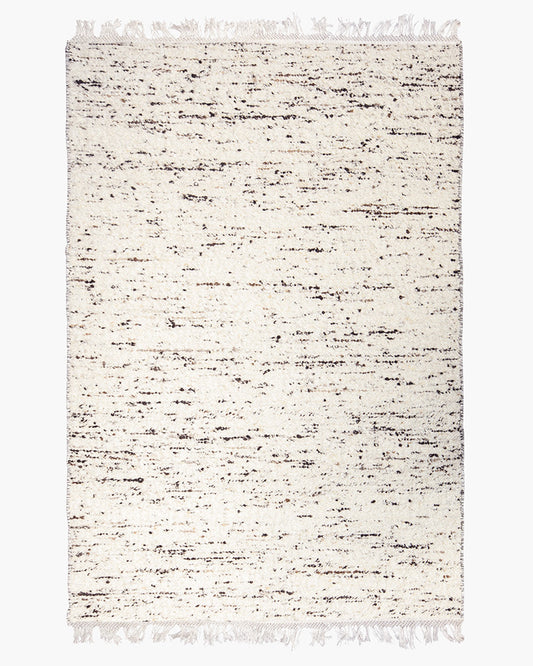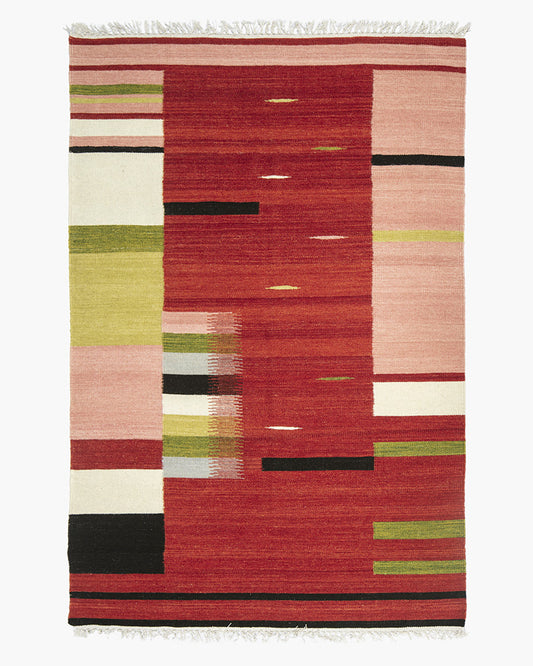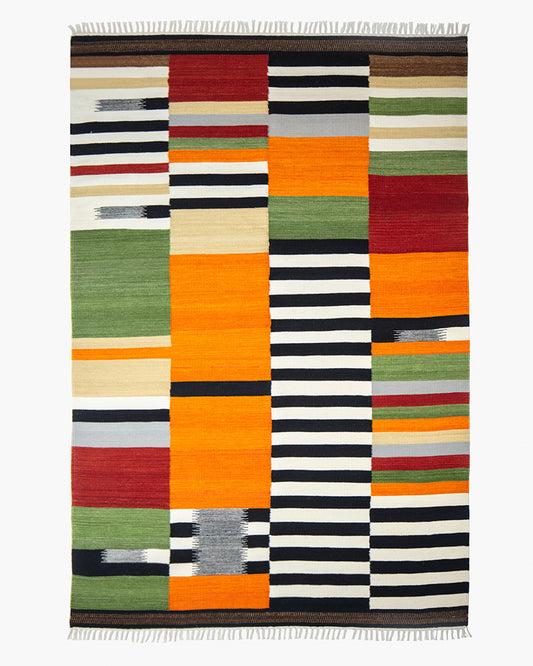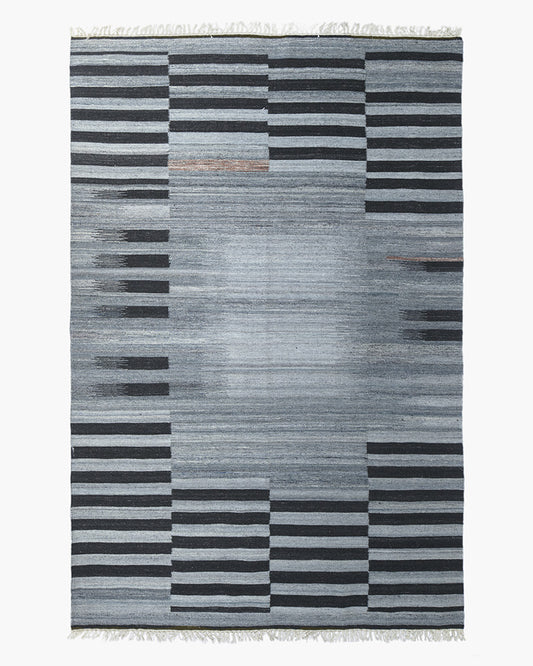There will always be new interior design trends making the rounds, and these images can be a great source of inspiration. However, you are not buying a rug for some fantasy home, you are buying it for your home. You probably have a more eclectic and lived-in home than what is on Instagram or in the magazines.
One of the main issues I see on social media is the proliferation of white and beige. There is nothing wrong with having white walls and beige furniture and rugs (I do sell quite a few beige rugs myself), but something that isn’t shown in these perfect beige homes is what a neutral palette does to colourful objects. White and beige are colour magnifiers, which makes the beige home a self-fulfilling prophesy. Beige begets beige. Once you start going beige you can’t escape it. Any other colours introduced looks way brighter, quite jarring and ultimately ‘bad’, regardless of how lovely or interesting they are. The burgundy lamp in the corner sticks out like a sore thumb. That incredible chest of drawers you found with a hand painted floral boarder looks like its under interrogation lights.
A problem I have with the beige and white rooms of the internet is that the thing using the room tends to look bad in it. HUMANS! We look bad in beige rooms! Humans tend to wear colours and change clothing every day. Unless we are matching our outfits to our sofa/rug/lamps/drapes/etc, like a non-beige throw pillow, we end up making the room look bad, or worse, look like we don’t belong in our own homes. This is craziness. People should build their living spaces so that humans look good in them. A big step in the right direction is to have eclecticism and playfulness in your interiors.
Now, the other sin with algorithm driven design content is it only shows you homes that you can safely call beautiful. This seems like a good thing on the surface. Firstly, it's primarily showing you unobtainable interiors in terms of price point (a tale as old as time, I know). But more importantly, its showing you more and more interiors that are the most popular. It thinks you should look at this or that because it's proven to be well liked. We have mostly lost the gate keepers which could potentially steer an aesthetic away from populism. There is no benefit to the algorithm to show you eclectic homes with personality, colour, or slightly odd design choices. It’s going to continue to push financially unrealistic and somewhat conservative forms of mass accepted design trends. It is boiling homes down to the Taylor Swift of design. Again, you shouldn’t want to live in perfect spaces, because ultimately, they would be uncomfortable and unreflective of the owner, like living in a hotel lobby.
You should choose based on what you like or what you feel would look best with your current interior, and stop being so serious about it! There is no perfect rug, but there are many great rugs that you would love and would look good in your home. And if the right rug ends up being a beige rug, then that is also fine :)
Foot Traffic
Where will your rug live? A dining room, a cozy bedroom, or a high-energy playroom? The location dictates the level of durability needed.
All our rugs are made of natural fibres and built to last, but some styles are better suited for different levels of wear:
- High-traffic areas: Kilim rugs (Stitch, Chanterelle, Rose Garden) and low pile rugs (Tile) are ideal for spaces like dining rooms, where chairs frequently slide back and forth. Their flat-woven and dense nature makes them resilient and easy to maintain.
- Comfort-driven spaces: If softness is your priority—think bedrooms or lounging areas— loose weave rugs (Birch, Fawn, Boucle) offer a plush, inviting feel.
By considering how much movement and activity your space sees, you can choose a rug that enhances your lifestyle without compromising on beauty.

No Matchy-Matchy!
Rather than fixating on the "perfect" colour, you should select a rug that speaks to you and build your space around it. A home filled with meaningful objects—pieces that tell the story of the memories you've collected—is far more inviting than one curated to perfection.
Forget the pressure of strict colour palettes. There is a common misconception that designers are using colour swatches to match colours. This is not true! They are seeing how the textures and colours look together. They are not working with a formula either. There are no rules about what goes together and what doesn’t. It’s an endless well of subjectivity.
Instead of matching, focus on what feels right. A rug should be more than just a finishing touch—it should reflect the room’s personality and act as a foundation for the space.

3. Colour Depth
Colour complexity is one of my fundamental design principles for a good quality rug. All our rugs are designed using various yarn dying processes to insure colour variation within the rug. This means that within a square inch of rung there is variance of shade, or flecks of colours.
In addition to making the look of the textile much richer, it adds complexity that will help hide dirt and spills. It’s important to consider where your rug is going and the type of possible spillage in the future. Warmer toned rugs (Fawn, Boucle Gold) are the best for hiding dirt. If you are an avid wine enthusiast, maybe a darker tone (Charcoal, Rose Garden, Tile Sumac) is how you future proof your home.

I won’t pretend this is a straightforward decision-making guide. Instead, I hope it gives you a deeper understanding of the charm of our pieces and the ethos behind my design process. When in doubt, trust your instincts—choose a rug that makes you feel at home, and the rest will follow.
Stay tuned for Part II, where we'll explore the art of selecting the right size rug for your space.




